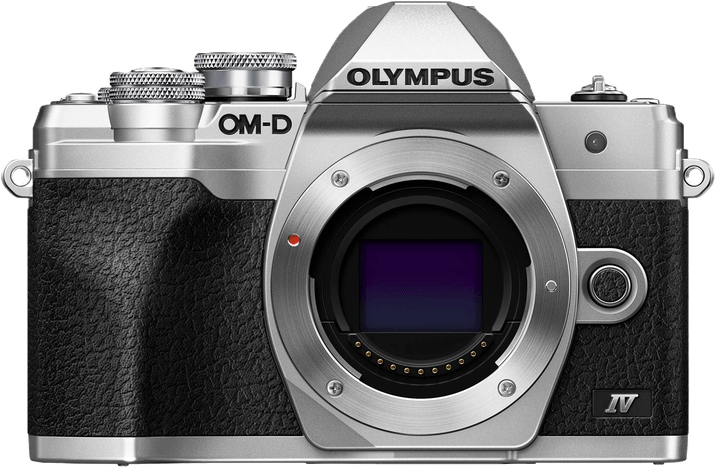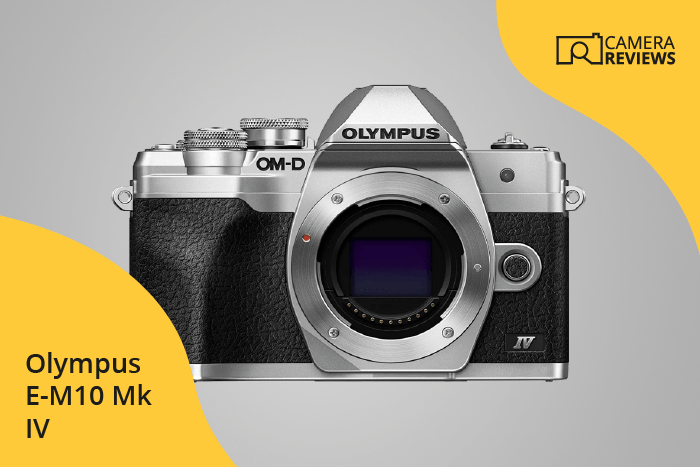Olympus OM-D E-M10 Mark IV Specs and Scores

The Olympus OM-D E-M10 Mark IV earns a score of 63/100. This mirrorless camera, announced on 08/04/2020 and released in the same year, is a decent contender in the market. Its dimensions are 122 x 84 x 49mm, and it weighs 383g or 0.84lbs.
Considering its specifications, the E-M10 Mark IV offers a good balance between size, weight, and cost. Its performance in today’s market is satisfactory, making it a suitable choice for various photography needs.
Olympus OM-D E-M10 Mark IV Overview and Optics
The Olympus OM-D E-M10 Mark IV receives a 63/100 score for optics. With 20 megapixels, a shooting speed of 15, and a CMOS sensor type, this camera provides adequate image quality for many users. The TruePic VIII processor and DXOMARK score of 73 for the sensor contribute to its overall performance.
The camera features a Micro Four Thirds sensor size, which is smaller than APS-C sensors found in some competing models. However, the Micro 4/3 lens mount offers compatibility with a wide range of lenses. The built-in image stabilization is a valuable feature for reducing camera shake and improving image sharpness.
The 4:3 aspect ratio is less common than the 3:2 ratio found in many other cameras, but it still produces well-balanced compositions. Despite not being the top performer in today’s market, the Olympus OM-D E-M10 Mark IV is a capable camera with a respectable set of optical features.
Olympus OM-D E-M10 Mark IV Video Performance
The Olympus OM-D E-M10 Mark IV boasts a video score of 83/100, reflecting its impressive capabilities in this domain. The camera offers a maximum video resolution of 4K, with dimensions of 3840 x 2160, ensuring high-quality footage. Furthermore, it supports a maximum video frame rate of 60fps, allowing for smooth and dynamic recordings.
In today’s market, the E-M10 Mark IV’s video features stand strong, as 4K resolution and 60fps frame rate have become industry standards for high-quality video recording. Additionally, the camera includes time-lapse functionality, providing users with creative flexibility in capturing unique moments.
The Olympus OM-D E-M10 Mark IV proves to be a competitive choice for videographers, offering excellent video capabilities that align with modern requirements. Its high score reflects the camera’s ability to deliver top-notch video performance.
Olympus OM-D E-M10 Mark IV Features and Benefits
The Olympus OM-D E-M10 Mark IV earns a feature score of 70/100. With a 3-inch touchscreen and a resolution of 1,040,000 dots, this camera offers a clear and interactive display. The flip screen provides flexibility for various shooting angles.
Despite lacking GPS, the camera compensates with Wi-Fi and Bluetooth capabilities, ensuring seamless connectivity. These features are essential for photographers who desire efficient sharing and remote control options.
Considering the market’s fast-paced advancements, the Olympus OM-D E-M10 Mark IV’s features meet the expectations of many photographers. The combination of a high-resolution touchscreen, flip screen, and connectivity options make this camera a competitive choice in the current market.
Olympus OM-D E-M10 Mark IV Storage and Battery
The Olympus OM-D E-M10 Mark IV receives a storage and battery score of 35/100. It has a single memory card slot, compatible with SD, SDHC, and SDXC cards, including UHS-II support. In today’s market, the presence of only one memory card slot is less competitive compared to cameras with dual slots, which provide more storage flexibility and backup options.
The camera’s battery life offers 360 shots per charge, which is relatively low compared to other models in its class. The battery type used is the BLS-50, and it supports USB charging, adding convenience for on-the-go charging. Despite these features, the overall storage and battery performance of the Olympus OM-D E-M10 Mark IV is not exceptional when compared to current market standards.
Olympus OM-D E-M10 Mark IV Alternatives
Do you want to know how the Olympus OM-D E-M10 Mark IV compares to its competitors? Try our camera comparison tool to compare specs side by side! If you’re not sure where to start, have a look at some popular comparisons for inspiration:
- Fujifilm X-T5 vs Olympus OM-D E-M10 Mark IV
- Olympus OM-D E-M1 vs OM-D E-M10
- Olympus OM-D E-M1 vs Panasonic Lumix DMC-GX8
- Olympus OM-D E-M1 Mark II vs Sony a6500
- Olympus OM-D E-M1 vs Panasonic Lumix DMC-GH4
- Olympus OM-D E-M10 vs Sony a6000
- Olympus OM-D E-M10 vs PEN E-PL7
- Fujifilm X-T30 II vs Olympus OM-D E-M10 Mark IV
- Olympus OM-D E-M10 vs Panasonic Lumix DMC-GX7
- Olympus OM-D E-M10 vs Panasonic Lumix DMC-GM5
Olympus OM-D E-M10 Mark IV FAQ
Does the Olympus OM-D E-M10 Mark IV Have Built-in Image Stabilization?
Yes, the Olympus OM-D E-M10 Mark IV features a 5-axis in-body image stabilization system, ensuring sharp images and smooth video recording even in challenging shooting conditions.
Does the Olympus OM-D E-M10 Mark IV Support 4K Video Recording?
Yes, the Olympus OM-D E-M10 Mark IV supports 4K video recording at up to 30 frames per second, providing high-quality video footage for your creative projects.
What Size Sensor Does The Olympus OM-D E-M10 Mark IV Have?
The Olympus OM-D E-M10 Mark IV is equipped with a Micro Four Thirds sensor, offering a perfect balance between size, image quality, and lens compatibility for both photography and video work.
Does the Olympus OM-D E-M10 Mark IV Have a Dual Memory Card Slot?
No, the Olympus OM-D E-M10 Mark IV has a single memory card slot, which supports SD, SDHC, and SDXC cards, including UHS-II compatible cards for faster performance.
Does the Olympus OM-D E-M10 Mark IV Have a Touch Screen?
Yes, the Olympus OM-D E-M10 Mark IV features a 3-inch tilting touch screen, allowing for easy navigation, image review, and touch-based autofocus control.
Does the Olympus OM-D E-M10 Mark IV Have Wi-Fi and Bluetooth?
Yes, the Olympus OM-D E-M10 Mark IV has built-in Wi-Fi and Bluetooth connectivity, enabling wireless image transfer, remote camera control, and seamless integration with smartphone apps.
Does the Olympus OM-D E-M10 Mark IV Have GPS?
No, the Olympus OM-D E-M10 Mark IV does not have a built-in GPS module, but location data can be added to your images using the Olympus Image Share smartphone app.
Is the Olympus OM-D E-M10 Mark IV Weather Sealed?
No, the Olympus OM-D E-M10 Mark IV is not weather-sealed, so it’s recommended to use caution when shooting in harsh weather conditions or protect the camera with a rain cover.
Does the Olympus OM-D E-M10 Mark IV Have a Built-in Flash?
Yes, the Olympus OM-D E-M10 Mark IV includes a built-in pop-up flash, which is useful for adding extra light in low-light situations or for fill-flash photography.

